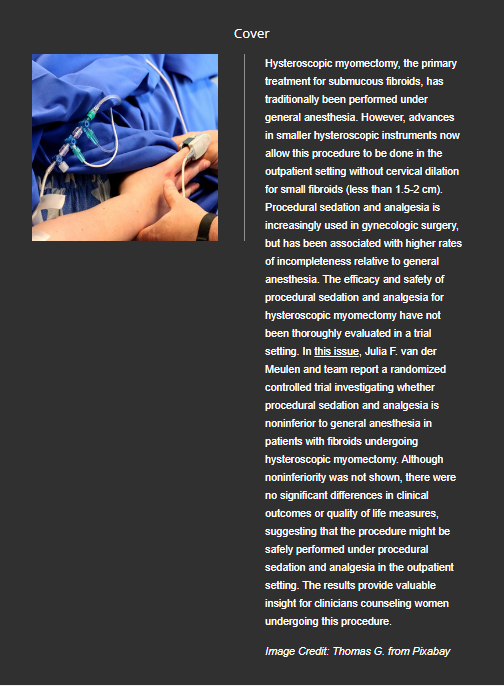Long-term outcomes of hospitalized patients with SARS-CoV-2/COVID-19 with and without neurological involvement: 3-year follow-up assessment
IF 15.8
1区 医学
Q1 Medicine
引用次数: 0
Abstract
Background Acute neurological manifestation is a common complication of acute Coronavirus Disease 2019 (COVID-19) disease. This retrospective cohort study investigated the 3-year outcomes of patients with and without significant neurological manifestations during initial COVID-19 hospitalization. Methods and findings Patients hospitalized for Severe Acute Respiratory Syndrome Coronavirus 2 (SARS-CoV-2) infection between 03/01/2020 and 4/16/2020 in the Montefiore Health System in the Bronx, an epicenter of the early pandemic, were included. Follow-up data was captured up to 01/23/2023 (3 years post-COVID-19). This cohort consisted of 414 patients with COVID-19 with significant neurological manifestations and 1,199 propensity-matched patients (for age and COVID-19 severity score) with COVID-19 without neurological manifestations. Neurological involvement during the acute phase included acute stroke, new or recrudescent seizures, anatomic brain lesions, presence of altered mentation with evidence for impaired cognition or arousal, and neuro-COVID-19 complex (headache, anosmia, ageusia, chemesthesis, vertigo, presyncope, paresthesias, cranial nerve abnormalities, ataxia, dysautonomia, and skeletal muscle injury with normal orientation and arousal signs). There were no significant group differences in female sex composition (44.93% versus 48.21%, p = 0.249), ICU and IMV status, white, not Hispanic (6.52% versus 7.84%, p = 0.380), and Hispanic (33.57% versus 38.20%, p = 0.093), except black non-Hispanic (42.51% versus 36.03%, p = 0.019). Primary outcomes were mortality, stroke, heart attack, major adverse cardiovascular events (MACE), reinfection, and hospital readmission post-discharge. Secondary outcomes were neuroimaging findings (hemorrhage, active and prior stroke, mass effect, microhemorrhages, white matter changes, microvascular disease (MVD), and volume loss). More patients in the neurological cohort were discharged to acute rehabilitation (10.39% versus 3.34%, p < 0.001) or skilled nursing facilities (35.75% versus 25.35%, p < 0.001) and fewer to home (50.24% versus 66.64%, p < 0.001) than matched controls. Incidence of readmission for any reason (65.70% versus 60.72%, p = 0.036), stroke (6.28% versus 2.34%, p < 0.001), and MACE (20.53% versus 16.51%, p = 0.032) was higher in the neurological cohort post-discharge. Per Kaplan–Meier univariate survival curve analysis, such patients in the neurological cohort were more likely to die post-discharge compared to controls (hazard ratio: 2.346, (95% confidence interval (CI) [1.586, 3.470]; p < 0.001)). Across both cohorts, the major causes of death post-discharge were heart disease (13.79% neurological, 15.38% control), sepsis (8.63%, 17.58%), influenza and pneumonia (13.79%, 9.89%), COVID-19 (10.34%, 7.69%), and acute respiratory distress syndrome (ARDS) (10.34%, 6.59%). Factors associated with mortality after leaving the hospital involved the neurological cohort (odds ratio (OR): 1.802 (95% CI [1.237, 2.608]; p = 0.002)), discharge disposition (OR: 1.508 (95% CI [1.276, 1.775]; p < 0.001)), congestive heart failure (OR: 2.281 (95% CI [1.429, 3.593]; p < 0.001)), higher COVID-19 severity score (OR: 1.177 (95% CI [1.062, 1.304]; p = 0.002)), and older age (OR: 1.027 (95% CI [1.010, 1.044]; p = 0.002)). There were no group differences in radiological findings, except that the neurological cohort showed significantly more age-adjusted brain volume loss (p = 0.045) than controls. The study’s patient cohort was limited to patients infected with COVID-19 during the first wave of the pandemic, when hospitals were overburdened, vaccines were not yet available, and treatments were limited. Patient profiles might differ when interrogating subsequent waves. Conclusions Patients with COVID-19 with neurological manifestations had worse long-term outcomes compared to matched controls. These findings raise awareness and the need for closer monitoring and timely interventions for patients with COVID-19 with neurological manifestations, as their disease course involving initial neurological manifestations is associated with enhanced morbidity and mortality.患有或未患有神经系统疾病的 SARS-CoV-2/COVID-19 住院患者的长期疗效:三年随访评估
背景 急性神经系统表现是急性冠状病毒病2019(COVID-19)的常见并发症。这项回顾性队列研究调查了在最初的COVID-19住院期间出现和未出现明显神经系统表现的患者的3年预后。研究方法和结果 纳入了 2020 年 1 月 3 日至 2020 年 4 月 16 日期间因感染严重急性呼吸系统综合征冠状病毒 2(SARS-CoV-2)而在布朗克斯区蒙特菲奥里卫生系统(该地区是早期大流行的中心)住院治疗的患者。随访数据收集至 2023 年 1 月 23 日(COVID-19 后 3 年)。该队列包括 414 名有明显神经系统表现的 COVID-19 患者和 1199 名倾向匹配的无神经系统表现的 COVID-19 患者(根据年龄和 COVID-19 严重程度评分)。急性期的神经系统受累包括急性中风、新发或复发的癫痫发作、脑部解剖学病变、存在认知或唤醒受损证据的精神改变以及神经-COVID-19综合征(头痛、嗅觉障碍、老年性痴呆、化疗、眩晕、晕厥前兆、麻痹、颅神经异常、共济失调、自主神经功能障碍以及骨骼肌损伤,但定向力和唤醒体征正常)。在女性性别组成(44.93% 对 48.21%,P = 0.249)、ICU 和 IMV 状态、白人、非西班牙裔(6.52% 对 7.84%,P = 0.380)和西班牙裔(33.57% 对 38.20%,P = 0.093)方面,除黑人非西班牙裔(42.51% 对 36.03%,P = 0.019)外,没有明显的组间差异。主要结果为死亡率、中风、心脏病发作、主要不良心血管事件(MACE)、再感染和出院后再入院。次要结果是神经影像学检查结果(出血、活动性中风和既往中风、肿块效应、微出血、白质改变、微血管疾病(MVD)和容积损失)。与匹配的对照组相比,神经系统队列中更多的患者出院后去了急性康复中心(10.39% 对 3.34%,p < 0.001)或专业护理机构(35.75% 对 25.35%,p < 0.001),更少的患者出院后回家(50.24% 对 66.64%,p < 0.001)。出院后因任何原因再次入院(65.70% 对 60.72%,P = 0.036)、中风(6.28% 对 2.34%,P < 0.001)和 MACE(20.53% 对 16.51%,P = 0.032)的发生率在神经系统组群中更高。根据 Kaplan-Meier 单变量生存曲线分析,与对照组相比,神经系统队列中的此类患者出院后死亡的可能性更高(危险比:2.346,(95% 置信区间 (CI) [1.586, 3.470];p < 0.001))。在两个队列中,出院后死亡的主要原因是心脏病(神经系统13.79%,对照组15.38%)、败血症(8.63%,对照组17.58%)、流感和肺炎(13.79%,对照组9.89%)、COVID-19(10.34%,对照组7.69%)和急性呼吸窘迫综合征(ARDS)(10.34%,对照组6.59%)。与出院后死亡率相关的因素包括神经系统队列(几率比(OR):1.802(95% CI [1.237,2.608];P = 0.002))、出院处置(OR:1.508(95% CI [1.276,1.775];P < 0.001))、充血性心力衰竭(OR:2.281(95% CI [1.429,3.593];P < 0.001))、COVID-19 严重程度评分较高(OR:1.177(95% CI [1.062,1.304];P = 0.002))和年龄较大(OR:1.027(95% CI [1.010,1.044];P = 0.002))。除了神经系统组群的年龄调整后脑容量损失(p = 0.045)明显高于对照组之外,其他组群的放射学结果没有差异。该研究的患者队列仅限于第一波大流行期间感染 COVID-19 的患者,当时医院负担过重,疫苗尚未上市,治疗手段有限。在对后续疫情进行调查时,患者情况可能会有所不同。结论 与匹配的对照组相比,有神经系统表现的 COVID-19 患者的长期预后较差。这些发现提高了人们对密切监测和及时干预有神经系统表现的 COVID-19 患者的认识和需求,因为他们的病程包括最初的神经系统表现,与更高的发病率和死亡率相关。
本文章由计算机程序翻译,如有差异,请以英文原文为准。
求助全文
约1分钟内获得全文
求助全文
来源期刊

PLoS Medicine
MEDICINE, GENERAL & INTERNAL-
CiteScore
17.60
自引率
0.60%
发文量
227
审稿时长
4-8 weeks
期刊介绍:
PLOS Medicine is a prominent platform for discussing and researching global health challenges. The journal covers a wide range of topics, including biomedical, environmental, social, and political factors affecting health. It prioritizes articles that contribute to clinical practice, health policy, or a better understanding of pathophysiology, ultimately aiming to improve health outcomes across different settings.
The journal is unwavering in its commitment to uphold the highest ethical standards in medical publishing. This includes actively managing and disclosing any conflicts of interest related to reporting, reviewing, and publishing. PLOS Medicine promotes transparency in the entire review and publication process. The journal also encourages data sharing and encourages the reuse of published work. Additionally, authors retain copyright for their work, and the publication is made accessible through Open Access with no restrictions on availability and dissemination.
PLOS Medicine takes measures to avoid conflicts of interest associated with advertising drugs and medical devices or engaging in the exclusive sale of reprints.
 求助内容:
求助内容: 应助结果提醒方式:
应助结果提醒方式:


